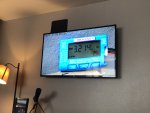If you haven't rigged up a connector to actually **do** the balancing, you might as well be using the higher rate PSU
at under 10A charging you **are really** risking harmful overcharging, even at 3.45Vpc
At this point I'll recommend parallel 1S charging, setpoint 3.55V, and if under .05C, just do one hour at a time, maybe rig a timer,
then let them settle before checking resting V.
3.45Vpc **resting** really is Full-full, and the sitting paralleling is getting them well balanced.
After done, break them up each isolated, and see if any drop more / faster than others. Not saying anything can be done, but possible heads' up as to the weak link.
at under 10A charging you **are really** risking harmful overcharging, even at 3.45Vpc
At this point I'll recommend parallel 1S charging, setpoint 3.55V, and if under .05C, just do one hour at a time, maybe rig a timer,
then let them settle before checking resting V.
3.45Vpc **resting** really is Full-full, and the sitting paralleling is getting them well balanced.
After done, break them up each isolated, and see if any drop more / faster than others. Not saying anything can be done, but possible heads' up as to the weak link.


